Lady Jane Grey Worksheets
Do you want to save dozens of hours in time? Get your evenings and weekends back? Be able to teach about Lady Jane Grey to your students?
Our worksheet bundle includes a fact file and printable worksheets and student activities. Perfect for both the classroom and homeschooling!
Resource Examples
Click any of the example images below to view a larger version.
Fact File
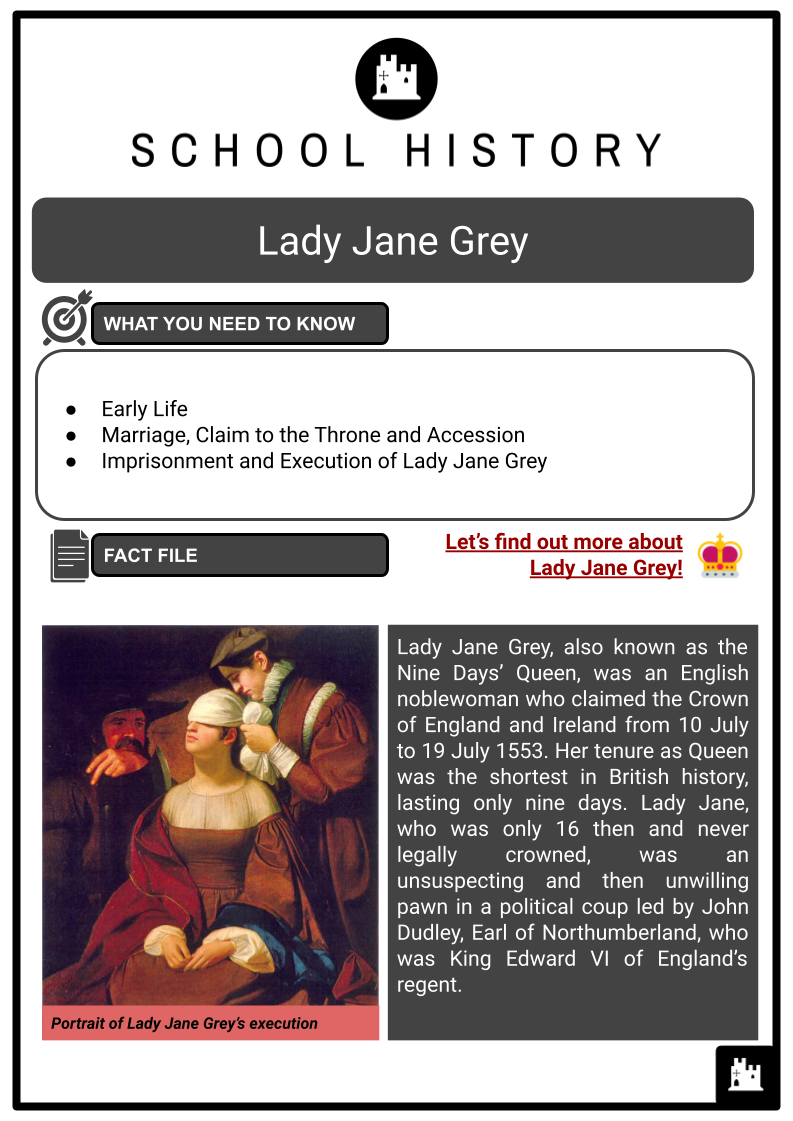
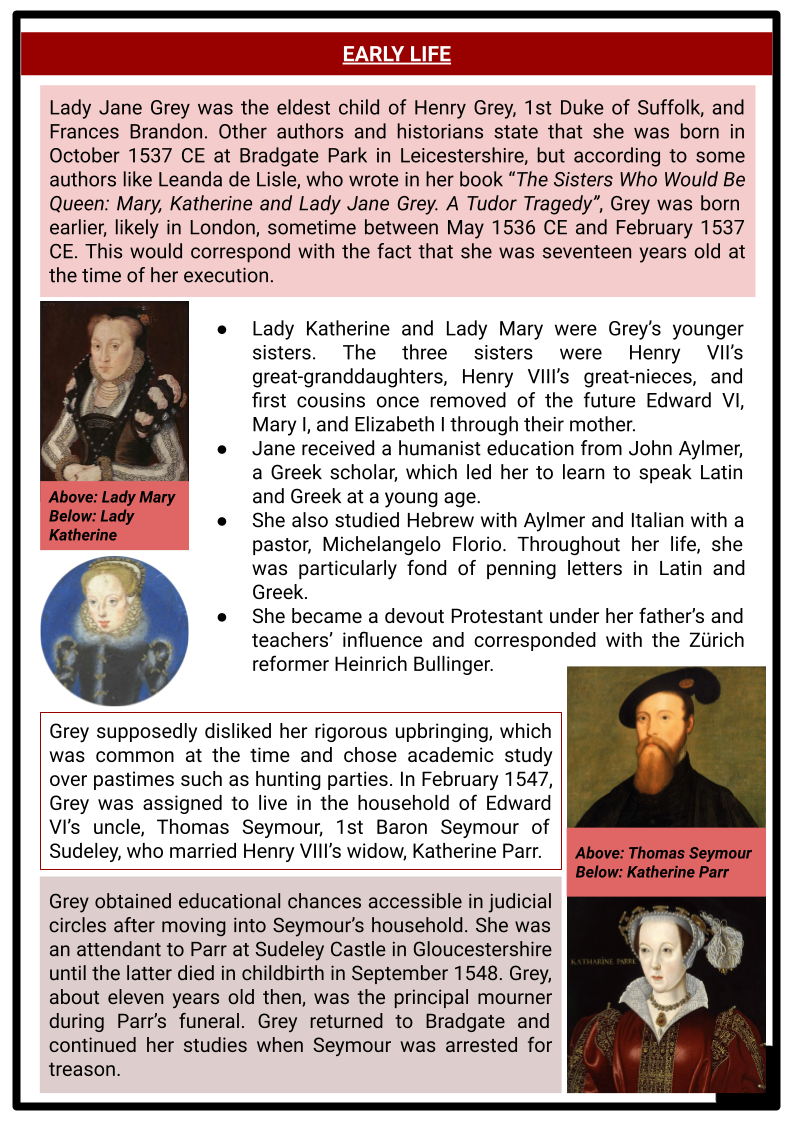
Student Activities
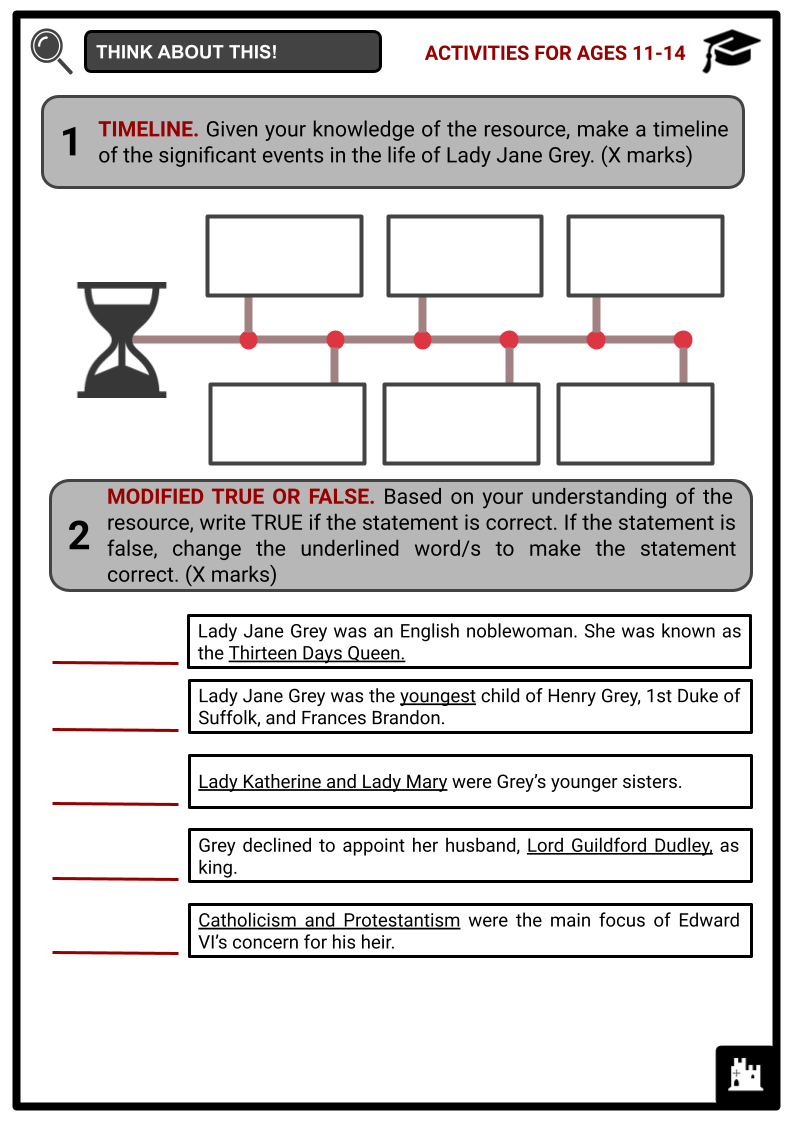
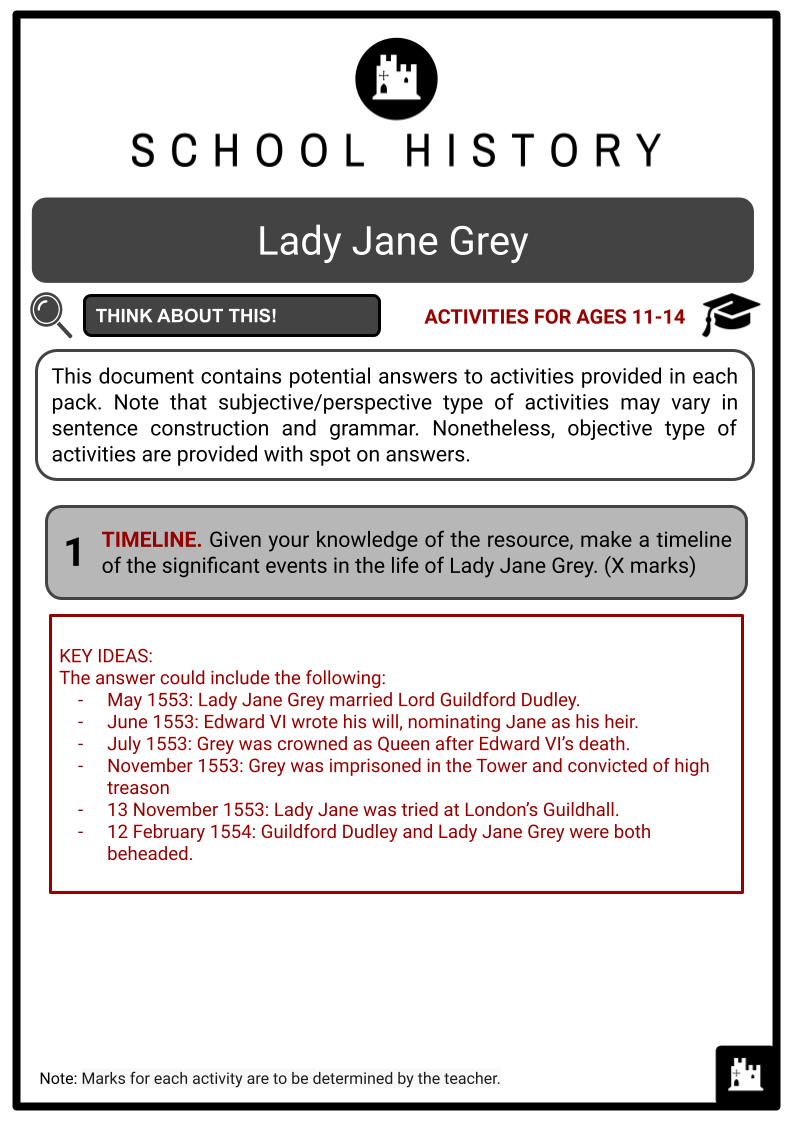
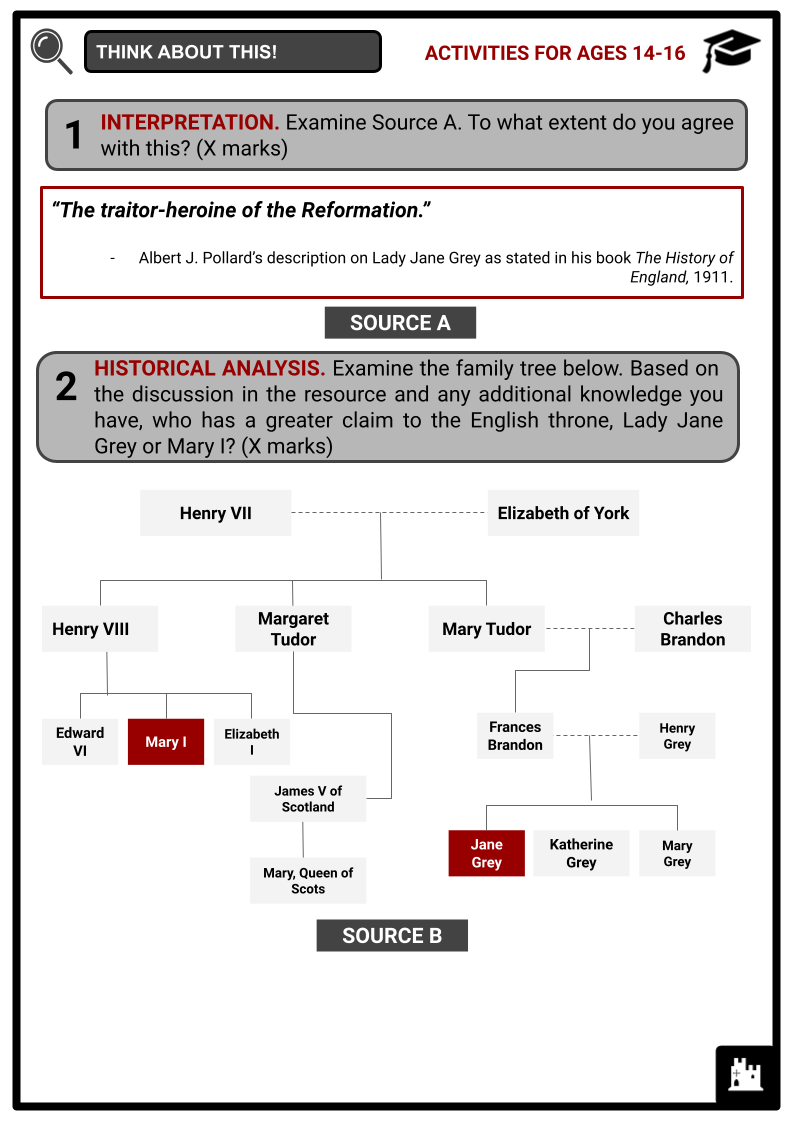
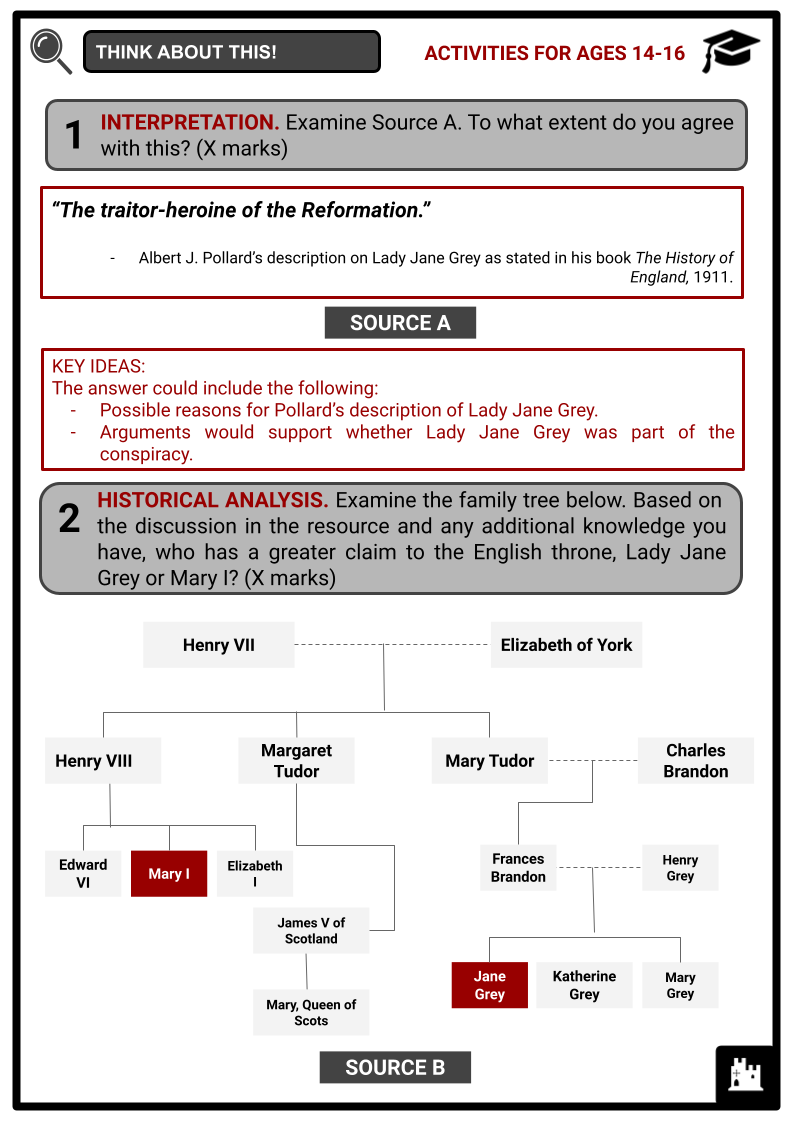
Summary
- Early Life
- Marriage, Claim to the Throne and Accession
- Imprisonment and Execution of Lady Jane Grey
Key Facts And Information
Let’s find out more about Lady Jane Grey!
Lady Jane Grey, also known as the Nine Days’ Queen, was an English noblewoman who claimed the Crown of England and Ireland from 10 July to 19 July 1553. Her tenure as Queen was the shortest in British history, lasting only nine days. Lady Jane, who was only 16 then and never legally crowned, was an unsuspecting and then unwilling pawn in a political coup led by John Dudley, Earl of Northumberland, who was King Edward VI of England’s regent.
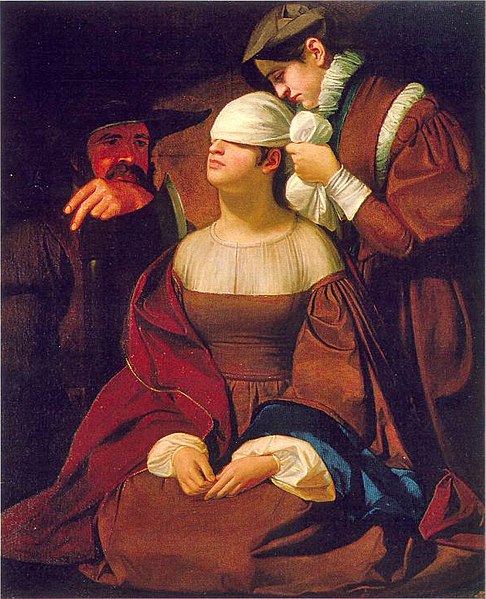
EARLY LIFE
- Lady Jane Grey was the eldest child of Henry Grey, 1st Duke of Suffolk, and Frances Brandon. Other authors and historians state that she was born in October 1537 CE at Bradgate Park in Leicestershire, but according to some authors like Leanda de Lisle, who wrote in her book “The Sisters Who Would Be Queen: Mary, Katherine and Lady Jane Grey. A Tudor Tragedy”, Grey was born earlier, likely in London, sometime between May 1536 CE and February 1537 CE. This would correspond with the fact that she was seventeen years old at the time of her execution.
- Lady Katherine and Lady Mary were Grey’s younger sisters. The three sisters were Henry VII’s great-granddaughters, Henry VIII’s great-nieces, and first cousins once removed of the future Edward VI, Mary I, and Elizabeth I through their mother.
- Jane received a humanist education from John Aylmer, a Greek scholar, which led her to learn to speak Latin and Greek at a young age.
- She also studied Hebrew with Aylmer and Italian with a pastor, Michelangelo Florio. Throughout her life, she was particularly fond of penning letters in Latin and Greek.
- She became a devout Protestant under her father’s and teachers’ influence and corresponded with the Zürich reformer Heinrich Bullinger.
- Grey supposedly disliked her rigorous upbringing, which was common at the time and chose academic study over pastimes such as hunting parties. In February 1547, Grey was assigned to live in the household of Edward VI’s uncle, Thomas Seymour, 1st Baron Seymour of Sudeley, who married Henry VIII’s widow, Katherine Parr.
- Grey obtained educational chances accessible in judicial circles after moving into Seymour’s household. She was an attendant to Parr at Sudeley Castle in Gloucestershire until the latter died in childbirth in September 1548. Grey, about eleven years old then, was the principal mourner during Parr’s funeral. Grey returned to Bradgate and continued her studies when Seymour was arrested for treason.
MARRIAGE, CLAIM TO THE THRONE AND ACCESSION
- The Third Succession Act of 1544 reinstated Henry VIII’s daughters, Mary I and Elizabeth I, to the line of succession even though they were still considered illegitimate. Furthermore, Henry VIII was given the authority to change the succession by will.
- Henry’s will confirmed his three children’s succession and said that if none left descendants, the monarchy would fall to the heirs of his younger sister, Mary Tudor, which included Grey. For unclear reasons, Henry barred Grey’s mother, Frances Grey, from the succession and the claims of his elder sister, Margaret, who married into the Scottish royal dynasty and aristocracy.
- During Henry VIII’s reign, Mary and Elizabeth were proclaimed illegitimate by statute when his marriages to Catherine of Aragon and Anne Boleyn were pronounced null and void. Grey married Lord Guildford Dudley in May 1553, the younger son of Edward VI’s senior minister, John Dudley, Duke of Northumberland.
- After John Dudley’s persuasion, Edward VI wrote his will in June 1553. Edward nominated Grey and her male heirs as successors to the Crown because Mary I, Edward’s half-sister, was Catholic. On the other hand, Grey was a committed Protestant, and Edward assumed she would support the reformed Church of England, whose foundation Edward laid.
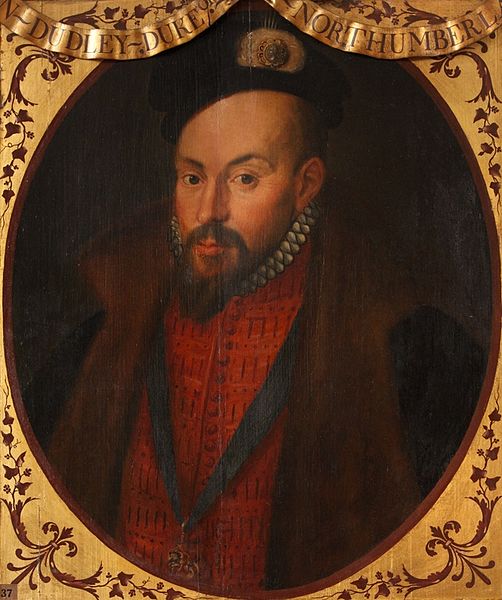
- Edward’s half-sisters, Mary and Elizabeth, were removed from the line of succession due to their illegitimacy, undermining their claims under the Third Succession Act.
- Mary was next in line for the throne but was unpopular as a fervent Catholic. Edward wished to keep England firmly Protestant, knowing Mary would convert England to Catholicism.
- Grey was proclaimed Queen after Edward’s death on 10 July 1553 and awaited coronation in the Tower of London.
- Lady Jane Grey declined to appoint her husband, Lord Guildford Dudley, as king since doing so would necessitate an Act of Parliament.
- After Edward’s death, John Dudley faced several critical tasks to consolidate his position. Above all, he needed to isolate and, ideally, capture Mary Tudor to prevent her from gaining support. When Mary was certain that Edward had died, she left her home in Hunsdon and travelled to East Anglia to rally her supporters.
- The Duke of Northumberland, Jane’s father-in-law, was one of Jane’s key supporters. Once Edward died, he moved rapidly to quiet any support for Mary by isolating and, preferably, capturing Mary Tudor to prevent her from collecting support.
- On 14 July, Dudley set out from London with men to kidnap Mary.
- However, Mary’s popularity grew swiftly, and most of Jane’s supporters deserted her. On 19 July 1553, the Privy Council of England abruptly changed sides and proclaimed Mary as Queen, deposing Jane. On 19 July, the Privy Council, the group of advisers to the sovereign of the Kingdom of England, switched allegiance and proclaimed Mary Queen in London.
- The historical consensus holds that this was done, honouring the strong public support for Mary. On the other hand, outside of Norfolk and Suffolk, where Dudley had put down Kett’s Rebellion and where Princess Mary took shelter, there is no evidence that the Privy Council supported Mary.
- Instead, it appears that in Dudley’s absence, Henry Fitzalan, 19th Earl of Arundel—whom Dudley had imprisoned and detained twice as a Somerset ally before rehabilitating him—engineered a coup d'état in the Privy Council.
- Dudley was dutifully abandoned by the council and arrested on his way to try to capture Mary on 21 July. Dudley’s 2,000-man army dispersed; a last-minute statement in support of Mary was insufficient to save Dudley’s life.
- Dudley was accused and hanged for treason less than a month later. Grey was imprisoned in the Tower and convicted of high treason in November 1553, which carried the death penalty.
IMPRISONMENT AND EXECUTION OF LADY JANE GREY
- Lady Jane Grey became one of the Tower of London’s many famous captives; in her instance, her royal house quickly became her jail. Grey, imprisoned in the Lieutenant’s Lodgings, bemoaned the easily influenced Reformists who had reverted to Mary and royal legitimacy.
- Grey also addressed a lengthy letter to Mary, detailing the recent events and admitting fault for assuming the throne but claiming no malice toward her.
- Mary, oblivious to the fact that her popularity was based on her family name and legitimacy rather than her religious beliefs, was resolved to return England to Catholicism.
- Rebellion was in the air in October 1553, when the Queen announced her marriage to Philip, son of King Charles V of Spain, England’s Catholic enemy number one.
- There were speculations of a Spanish invasion of England. The volatile position sealed Grey’s destiny, as Mary could not afford for her to become the figurehead of a scheme to dethrone her.
- On 13 November 1553, Lady Jane was tried at London’s Guildhall. For women convicted of treason, the sentence was automatic, so they were burned at the stake.
- Lady Jane would spend six months in the Tower, and one of her frequent visitors, Rowland Lee, an official of the Royal Mint, which was headquartered there, documented her captivity.
- Contrary to popular belief, the Tower of London was only ever used as a jail in the sense of housing prominent political or religious troublemakers. There were no cells, and detainees were instead housed in specific apartments. Jane was granted four regular attendants, one of whom was a nurse.
- After Queen Mary sent her priest to ask Jane if she would be prepared to renounce her Protestantism and received a resounding ‘no,’ the horrible sentence was passed, Guildford Dudley and Lady Jane Grey were both executed by beheading on 12 February 1554.
- Because Grey was of royal lineage, the death was carried out within the walls of the Tower of London rather than on Tower Hill, as there could be no outpouring of public sympathy for her.
- Meanwhile, Queen Mary I reigned until 1558 and re-established the Catholic Church in England. Still, her ambitions were reversed, this time permanently, by her successor, her half-sister Elizabeth I of England.
Frequently Asked Questions
- Who was Lady Jane Grey?
Lady Jane Grey was an English noblewoman who briefly held the title of Queen of England for nine days in July 1553.
- How did Lady Jane Grey become queen?
Lady Jane Grey became queen through a disputed succession. She was proclaimed queen after the death of Edward VI, as he had named her his heir in an attempt to prevent his Catholic half-sister, Mary I, from taking the throne.
- What happened to Lady Jane Grey after her deposition?
After being deposed, Lady Jane Grey was imprisoned in the Tower of London. She was later convicted of high treason and executed in 1554 at the age of 16 or 17.
